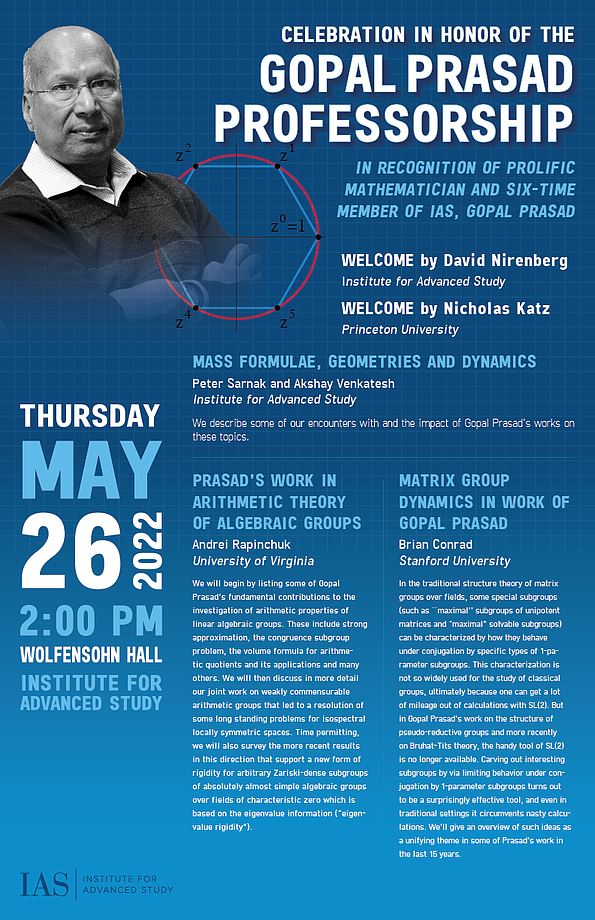Celebration in Honor of the Gopal Prasad Professorship

Celebration in Honor of the Gopal Prasad Professorship
Wolfensohn Hall
Thursday, May 26, 2:00 p.m.
In recognition of prolific mathematician and six-time member of IAS, Gopal Prasad.
Welcome by David Nirenberg, Institute for Advanced Study
Welcome by Nicholas Katz, Princeton University
Mass Formulae, Geometries and Dynamics
Peter Sarnak and Akshay Venkatesh, Institute for Advanced Study
We describe some of our encounters with and the impact of Gopal Prasad’s works on these topics.
Prasad's Work in Arithmetic Theory of Algebraic Groups
Andrei Rapinchuk, University of Virginia
We will begin by listing some of Gopal Prasad’s fundamental contributions to the investigation of arithmetic properties of linear algebraic groups. These include strong approximation, the congruence subgroup problem, the volume formula for arithmetic quotients and its applications, and many others. We will then discuss in more detail our joint work on weakly commensurable arithmetic groups that led to a resolution of some long standing problems for isospectral locally symmetric spaces. Time permitting, we will also survey the more recent results in this direction that support a new form of rigidity for arbitrary Zariski-dense subgroups of absolutely almost simple algebraic groups over fields of characteristic zero which is based on the eigenvalue information (“eigenvalue rigidity”).
Matrix Group Dynamics in Work of Gopal Prasad
Brian Conrad, Stanford University
In the traditional structure theory of matrix groups over fields, some special subgroups (such as ``maximal’’ subgroups of unipotent matrices and “maximal” solvable subgroups) can be characterized by how they behave under conjugation by specific types of 1-parameter subgroups. This characterization is not so widely used for the study of classical groups, ultimately because one can get a lot of mileage out of calculations with SL(2). But in Gopal Prasad’s work on the structure of pseudo-reductive groups and more recently on Bruhat-Tits theory, the handy tool of SL(2) is no longer available. Carving out interesting subgroups by via limiting behavior under conjugation by 1-parameter subgroups turns out to be a surprisingly effective tool, and even in traditional settings it circumvents nasty calculations. We’ll give an overview of such ideas as a unifying theme in some of Prasad’s work in the last 15 years.